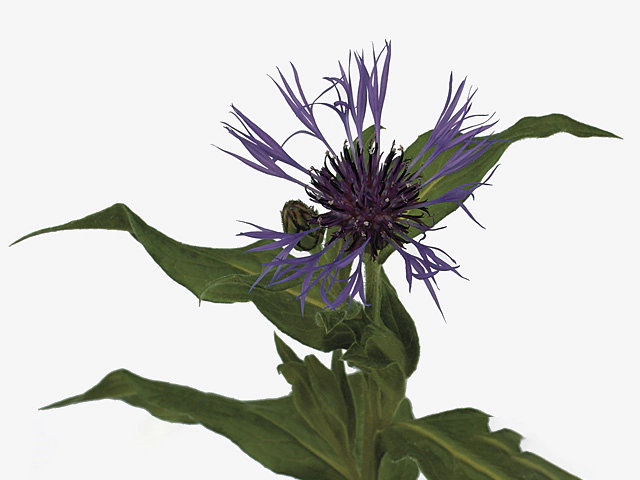Centaurea montana

| Flower scent | Unscented |
| Winter hardness | Excellent (USDA-zone 1,2,3,4) |
| Flower color | Blue-dark blue violet-093B |
| Light conditions | Sunny |
| Leaf colour, pattern | Bicolored |
| Toxicity (if consumed) | Not or barely |
Centaurea montana, commonly known as the cornflower, is a stunning perennial plant that boasts beautiful blue to dark blue-violet flowers. While it may not have a noticeable scent, this flower makes up for it with its visual appeal. Its compact, bushy growth habit and bicolored leaves further enhance its attractiveness.
One of the remarkable traits of Centaurea montana is its exceptional winter hardiness. This plant thrives in USDA zones 1, 2, 3, and 4, making it suitable for cold and harsh climates. Even in the harshest of winters, this cornflower will emerge victorious, showcasing its resilience and ability to withstand freezing temperatures.
The flowers of Centaurea montana take center stage during late spring to early summer, adding a burst of color to any garden or landscape. The vivid blue to dark blue-violet hues create a striking contrast against the green foliage, making this plant truly eye-catching.
In terms of light requirements, Centaurea montana prefers sunny conditions. Placing it in an area that receives full sun will ensure optimal growth and abundant blooms. This makes it an ideal choice for sunny borders, rock gardens, or even containers on sun-drenched patios.
Centaurea montana also has a low level of toxicity, making it a safe choice for households with pets or small children. While it's always best to discourage consumption of any plant material, this cornflower poses minimal danger if accidentally ingested.
Gardeners and flower enthusiasts will appreciate the versatility of Centaurea montana. Its compact size makes it suitable for small spaces, while its hardiness allows it to thrive in a variety of garden types. Whether as a border plant, a focal point in a mixed flower bed, or as part of a wildflower garden, the cornflower adds a touch of elegance and charm.
With its gorgeous flowers, excellent winter hardiness, bicolored leaves, and non-toxic nature, Centaurea montana is a true gem for any garden. Its ability to withstand cold climates and adapt to different growing conditions makes it a reliable choice for both experienced and novice gardeners alike. So why not add a splash of blue and violet to your garden with the enchanting Centaurea montana?
Market availability index by month:
| Jan. | Feb. | Mar. | Apr. | May | Jun. | Jul. | Aug. | Sep. | Oct. | Nov. | Dec. |
|---|---|---|---|---|---|---|---|---|---|---|---|
| - | - | - | 2 | 3 | 4 | 3 | 2 | 1 | - | - | - |